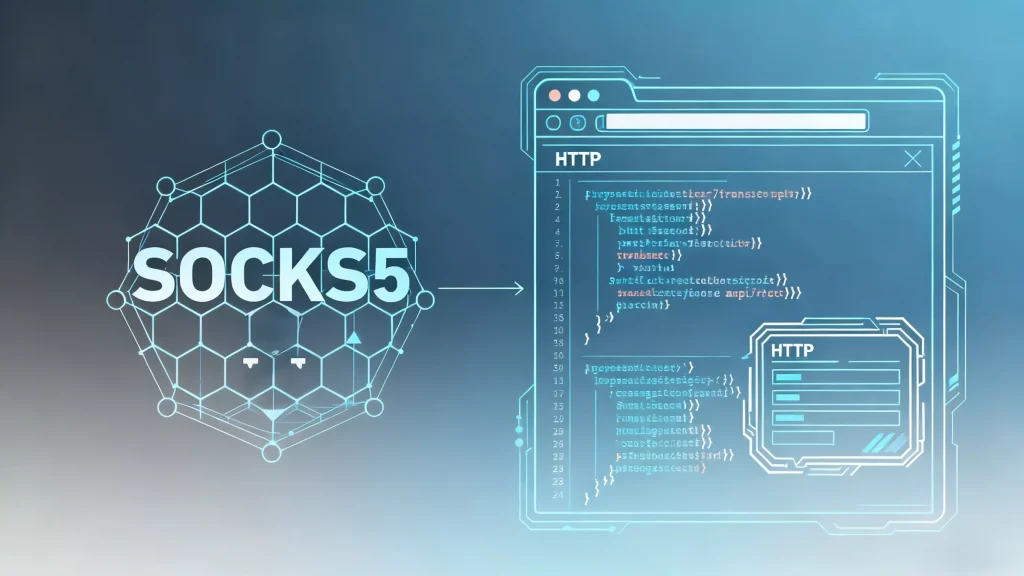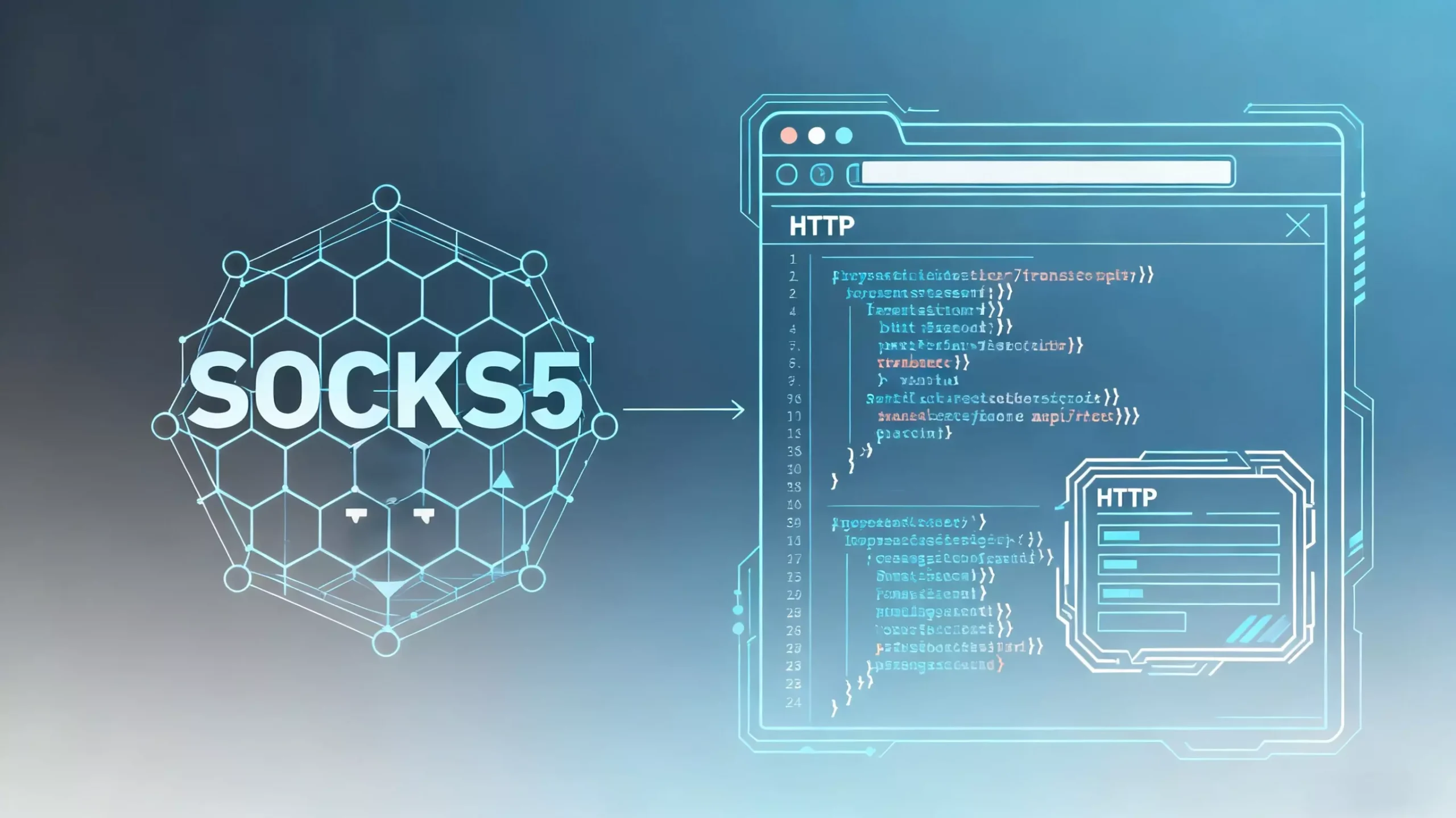In cross-border e-commerce, multi-account management, or data scraping, using a network proxy is essential for protecting accounts and ensuring stable connections. Among the most common types are SOCKS5 proxies and HTTP proxies. Although they seem similar, they differ significantly in protocol layers, anonymity, and applicable scenarios.
This article explores their mechanisms, advantages, limitations, and practical recommendations to help you choose the most suitable proxy IP solution.

1.HTTP Proxies: Application Layer “Web Gateways”
HTTP proxies operate at the application layer, mainly forwarding web requests (HTTP/HTTPS). They can modify HTTP headers, making them suitable for web browsing, scraping, and content filtering.
Advantages
- Easy to use: Supported by almost all browsers and HTTP clients.
- Flexible control: Headers can be customized to simulate browser requests or mask IP addresses.
- HTTPS support: Can create secure tunnels for encrypted web access.
Disadvantages
- Anonymity depends on proxy type: Transparent or standard anonymous proxies may expose your original IP in headers (like
X-Forwarded-For), while high-anonymity proxies do not. - Protocol behavior can be detected: Even high-anonymity HTTP proxies alter request headers, which may be recognized by advanced fingerprinting techniques.
- Caching is obsolete: Early HTTP proxies used caching to improve speed, but modern scraping or e-commerce operations require fresh, accurate data.
Ideal scenarios: Web scraping, API requests, lightweight account logins.
2.SOCKS5 Proxies: Lower-Level, More Flexible Channels
SOCKS5 proxies operate at the transport layer, forwarding almost all types of network traffic, not limited to HTTP. This makes them more flexible for multi-protocol and multi-purpose use cases.
Advantages
- Protocol-agnostic: Supports TCP and UDP, suitable for web access, P2P, gaming, email, and more.
- High anonymity: Does not modify headers, closely simulating a real user.
- Authentication support: Offers username/password verification to prevent unauthorized access.
Disadvantages
- No built-in encryption: Data security relies on upper-layer protocols like HTTPS.
- Slightly more complex setup: Some applications require manual configuration, e.g., SOCKS5 configurator tools.
Ideal scenarios: Cross-border e-commerce account management, scraping tasks, gaming multi-accounts, remote connections.
3.Key Differences: HTTP vs SOCKS5
| Feature | HTTP Proxy | SOCKS5 Proxy |
| Protocol Layer | Application Layer | Transport Layer |
| Supported Protocols | HTTP/HTTPS | TCP/UDP, multi-protocol |
| Anonymity | Depends on type (transparent / anonymous / high-anonymity) | Usually high-anonymity |
| Header Modification | Yes | No |
| Data Encryption | Relies on HTTPS | Relies on HTTPS |
| Setup Complexity | Simple | Moderate |
| Common Uses | Web browsing, scraping | Multi-protocol traffic, e-commerce accounts, remote access, gaming |
| IP Type | Can be dynamic IP or residential proxy IP | Can be residential IP or static IP |
4.Choosing the Right Proxy Type
- E-commerce multi-account management: Prefer SOCKS5 proxies with residential proxy IPs for high anonymity.
- Data scraping: High-anonymity HTTP proxies or residential proxies ensure accurate, real-time data collection.
- Multi-protocol access: Use SOCKS5 for games, apps, or other non-HTTP traffic.
- Static IP scenarios: Static IP is ideal for whitelist systems, APIs, or enterprise remote access, ensuring a consistent access source.
- Dynamic IP scenarios: For increased anonymity and frequent IP rotation, dynamic IP residential proxies provide flexibility and safety.
5.Conclusion
The difference between SOCKS5 and HTTP proxies is not just protocol-level—it also affects anonymity, protocol support, and security strategies.
- If your operations focus on web data and lightweight browsing, HTTP proxies can suffice.
- For higher privacy, cross-protocol compatibility, and safer account operations, SOCKS5 proxies are the professional choice.
Choosing the right network proxy can improve connection stability, protect accounts, and maintain data integrity.






